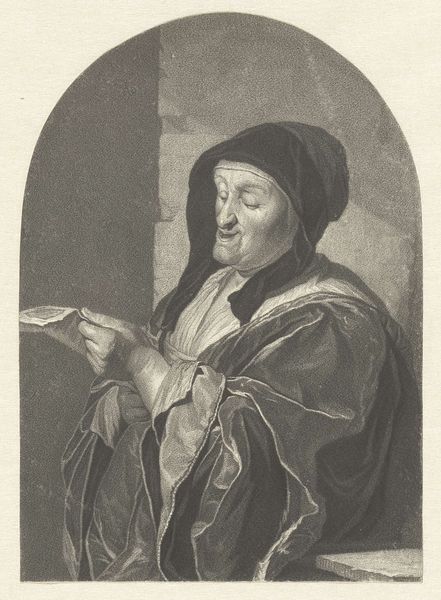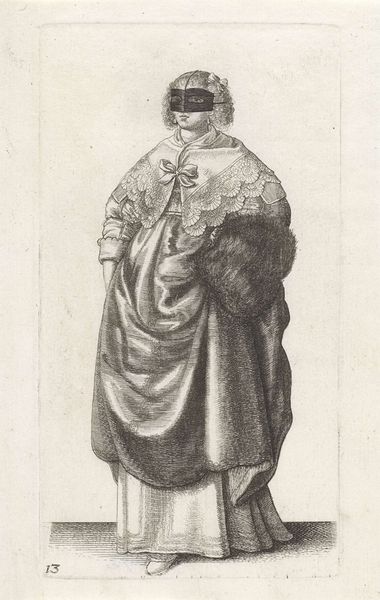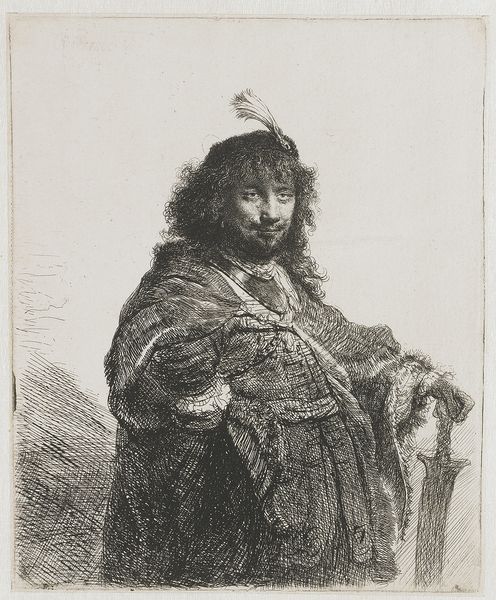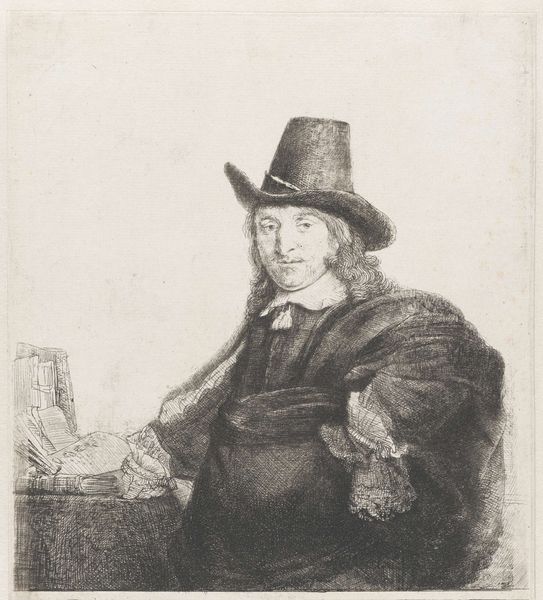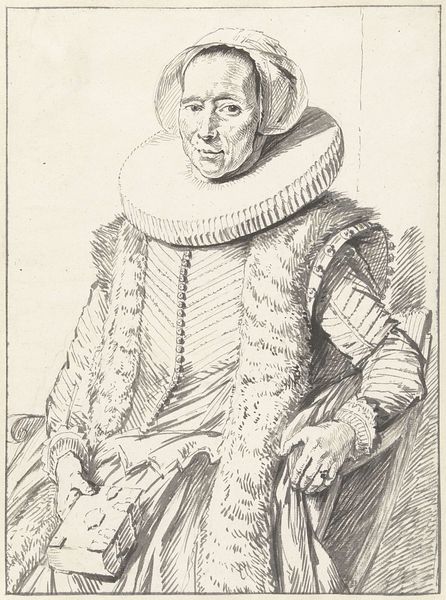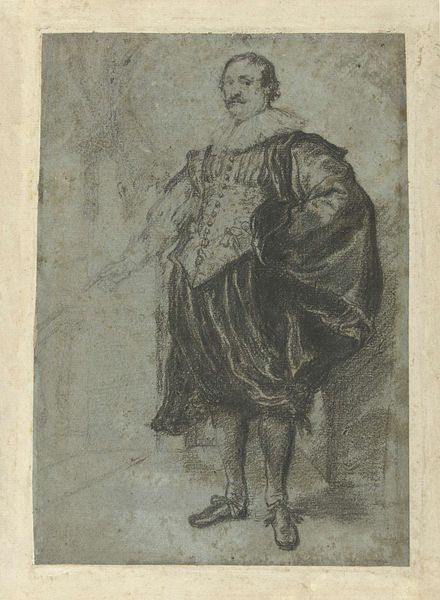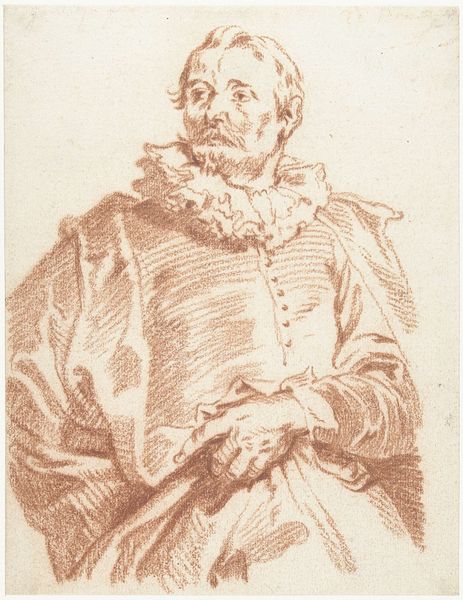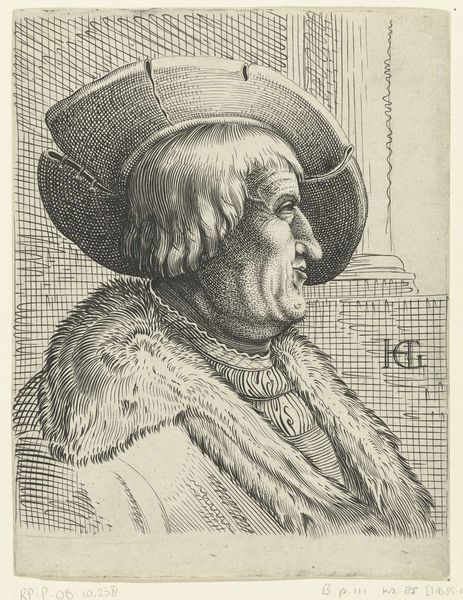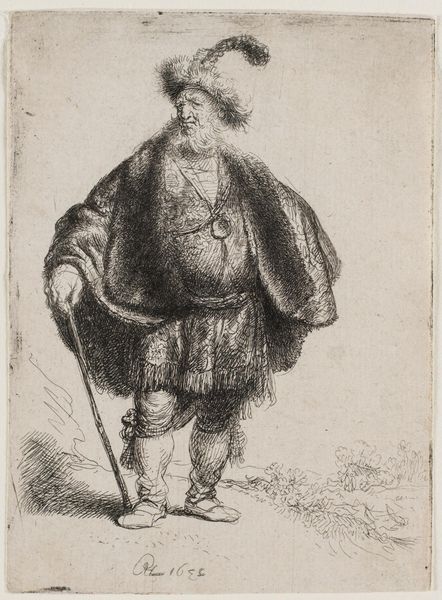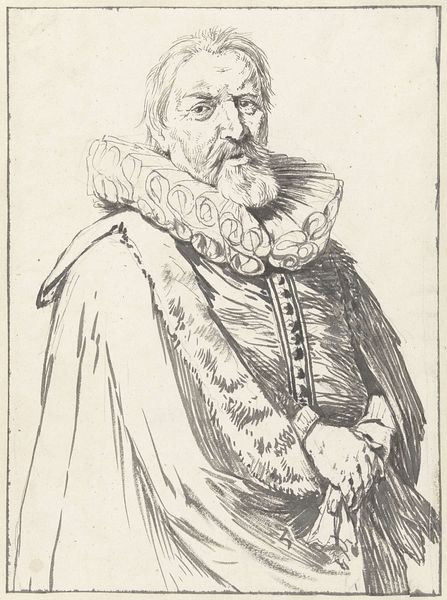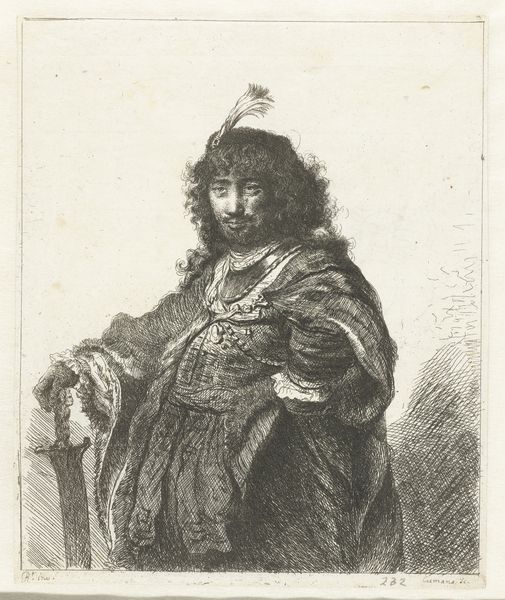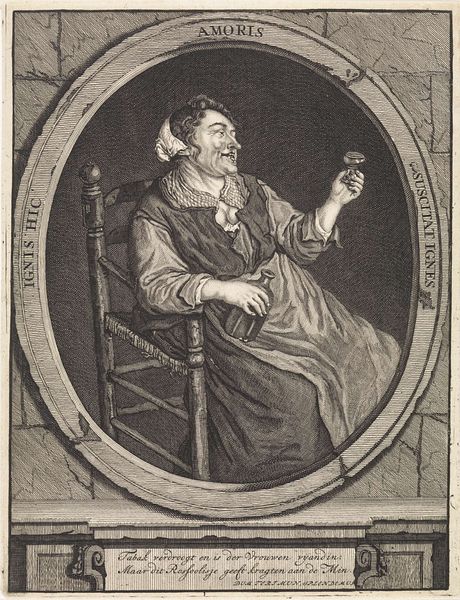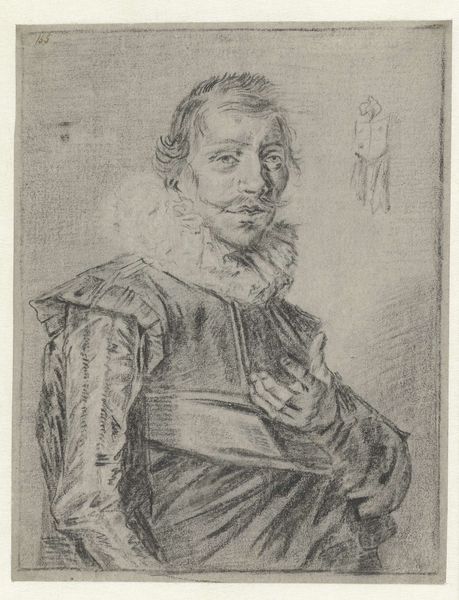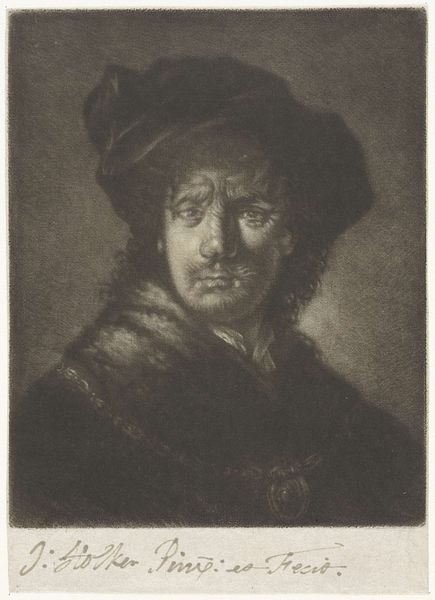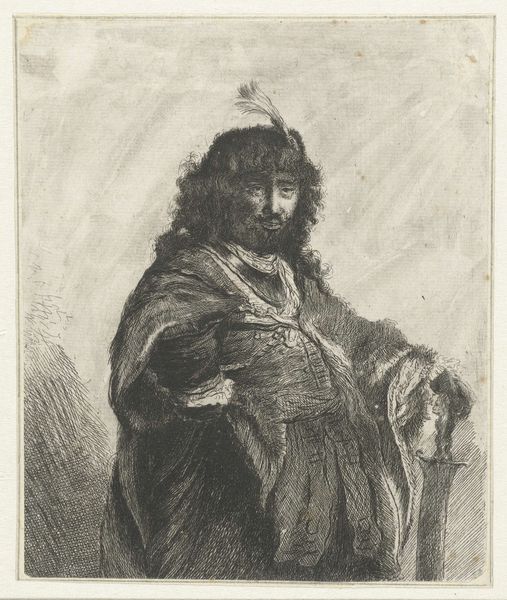
oil-paint
#
portrait
#
baroque
#
oil-paint
#
oil painting
#
genre-painting
Copyright: Public Domain: Artvee
Editor: This is Jacob Jordaens’ “Portrait of Magdalena de Cuyper,” painted around 1635 or 1636. The texture of her fur stole and the stark white ruff create an interesting contrast with her subdued expression. How do you approach analyzing a portrait like this, especially regarding its composition and arrangement of forms? Curator: The interplay between light and shadow orchestrates our perception, doesn’t it? Consider the red drapery; its placement invites a reading of drama, setting off her mien of contained experience. The portrait engages visual planes with symbolic import, contrasting domesticity with elements suggesting transcendence. Do you notice how the subtle tension resolves into an intriguing arrangement, seemingly straightforward? Editor: I do see that now, particularly with how the statue and the vase with the flower in the background lead the eye upwards. But what does the direction of the composition signify? Curator: In analyzing the portrait, direction underscores intent. For example, the interplay between the planes of shadow versus those of brightness determines an allegorical space, where mortality’s starkness is met with temporal wealth’s warmth. The visual language directs contemplation, drawing you into deciphering her story and, critically, ours. Editor: So, you're suggesting that these aren't merely aesthetic choices, but rather a carefully constructed visual argument? Curator: Precisely. Line, colour and space establish formal rhetoric. Jordaens isn’t just painting a woman; he’s orchestrating visual dynamics, encouraging a deeper consideration of the painted form’s impact. Does understanding form in this way reshape your viewing experience? Editor: It certainly does. I was so caught up in the historical aspect that I nearly overlooked the intentional arrangement of shapes and tones. Thank you for pointing this out. Curator: And thank you. Our discourse reinforces the power of structure, reaffirming our awareness when interpreting art's purpose and presentation.
Comments
rijksmuseum about 2 years ago
⋮
This elderly woman is the mother of Rogier Le Witer (adjacent). She wears a black widow’s cap and a somewhat old-fashioned cloak. In her hands she holds a handkerchief and a prayerbook, the latter symbolizing her piety. The tulip alludes to the tran-sience of earthly existence. This portrait belongs with the two likenesses hanging next to it. That this series is still intact is exceptional.
Join the conversation
Join millions of artists and users on Artera today and experience the ultimate creative platform.
